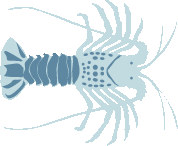Overview
Prospective FIPs intend to meet the requirements for active FIPs within one year. These projects are posted on FisheryProgress to help users identify opportunities to support developing FIPs and prevent the start of duplicate FIPs. Prospective FIPs are not yet demonstrating progress toward sustainability.
Netuno USA and Rainforest Seafoods have partnered with CeDePesca to develop a FIP for the spiny lobster (Panulirus argus) fishery in Jamaica. To this end, CeDePesca is preparing a gap analysis against the MSC standard that will inform the design of an Action Plan.
There are three types of lobsters found in Jamaica’s coastal waters and on the offshore banks of Pedro Bank, Morant Bank and Formigas Bank: Spiny lobsters (Panulirus argus), spotted spiny lobster (Panulirus guttatus) and slipper lobster (family Scyllaridae). Of the three types, spiny lobster -also known as Caribbean spiny lobster- is the most harvested.
The Jamaica spiny lobster fishery is conducted using traps as the main fishing gear, but other fishing gears are also used -such as nets-, as well as other fishing methods -such as hookah diving-. Individual fishers supply individual consumers and small intermediaries. The Jamaica spiny lobster fishery is conducted close to the coast onboard small vessels carrying 3-4 fishers that fish in day trips, and onboard larger vessels carrying 10-15 fishers that conduct fishing trips of about 3 to 5 days in offshore areas. Fishing vessels are made of wood regardless of their size.
The spiny lobster fishery is the second most lucrative export fishery in Jamaica, after the queen conch fishery. In 2019, the total production of lobster in Jamaica was estimated to be approximately 230 tons.
Netuno USA and Rainforest Seafoods have partnered with CeDePesca to develop a FIP for the spiny lobster (Panulirus argus) fishery in Jamaica.

